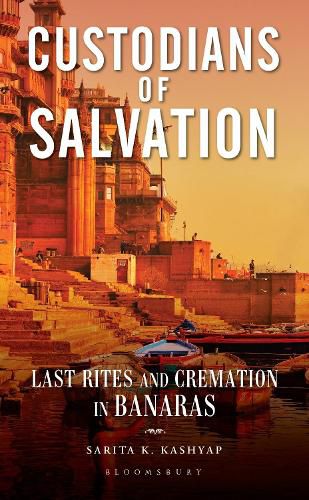Readings Newsletter
Become a Readings Member to make your shopping experience even easier.
Sign in or sign up for free!
You’re not far away from qualifying for FREE standard shipping within Australia
You’ve qualified for FREE standard shipping within Australia
The cart is loading…






This book critically examines the paradoxical status of Doms, as both essential facilitators of salvation and as a community positioned outside the varna hierarchy. Through an ethnographic study of daily interactions among various service castes at the cremation ghats of Banaras, the book explores the structural and spatial dynamics of this highly spiritualised domain. Furthermore, the study interrogates the evolving intersections between tradition and modernity within the death industry. It examines how different specialist castes collaborate in contemporary funeral practices and how technological advancements, particularly the introduction of electric crematoria, challenge deeply ingrained religious beliefs surrounding last rites. The analysis highlights the ongoing tension between modern cremation technologies and traditional funeral practices, revealing the socio-religious resistance to mechanised cremation and its implications for the livelihoods of those engaged in the death economy. Additionally, the book addresses the unprecedented disruptions brought by the COVID-19 pandemic, which led to a state of normlessness at cremation sites. It provides an in-depth examination of the pathological conditions during the crisis, the adaptive strategies employed by communities to navigate the 'new normal' in death rites, and the broader socio-economic consequences for the Dom, mourners, and other stakeholders. Lastly, it critically evaluates the role of the state in managing the crisis and its impact on funeral practices in Banaras.
$9.00 standard shipping within Australia
FREE standard shipping within Australia for orders over $100.00
Express & International shipping calculated at checkout
Stock availability can be subject to change without notice. We recommend calling the shop or contacting our online team to check availability of low stock items. Please see our Shopping Online page for more details.
This book critically examines the paradoxical status of Doms, as both essential facilitators of salvation and as a community positioned outside the varna hierarchy. Through an ethnographic study of daily interactions among various service castes at the cremation ghats of Banaras, the book explores the structural and spatial dynamics of this highly spiritualised domain. Furthermore, the study interrogates the evolving intersections between tradition and modernity within the death industry. It examines how different specialist castes collaborate in contemporary funeral practices and how technological advancements, particularly the introduction of electric crematoria, challenge deeply ingrained religious beliefs surrounding last rites. The analysis highlights the ongoing tension between modern cremation technologies and traditional funeral practices, revealing the socio-religious resistance to mechanised cremation and its implications for the livelihoods of those engaged in the death economy. Additionally, the book addresses the unprecedented disruptions brought by the COVID-19 pandemic, which led to a state of normlessness at cremation sites. It provides an in-depth examination of the pathological conditions during the crisis, the adaptive strategies employed by communities to navigate the 'new normal' in death rites, and the broader socio-economic consequences for the Dom, mourners, and other stakeholders. Lastly, it critically evaluates the role of the state in managing the crisis and its impact on funeral practices in Banaras.